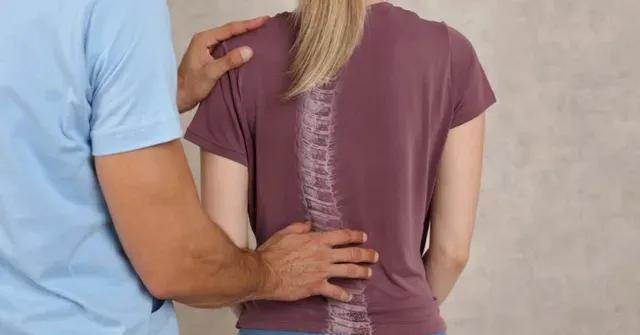Do I Have to Wear a Brace to Correct My Scoliosis?

- posted: Jun. 23, 2023
Your spine is the framework for the upper part of your skeleton, and your ribs, scapula, and clavicle. Other bones connect to the spine to form the linkages for your upper body to function. Your spine is necessary for standing, sitting up, and walking, and its curvature is part of that working.
Several conditions affect the curve of your spine, and scoliosis is a condition that can affect you in your childhood or late teenage years. Left untreated, it can affect your ability to move your upper body normally, leading to chronic back pain and affecting your breathing.
Treatment options for scoliosis vary with the severity of the condition, and a spinal brace is one method that can help. To find out if you need one, let’s look at what this condition does to your spine, find out when a brace is necessary, and examine other possible ways to treat it.
The experienced medical team, including Drs. Stephen Steller, Ryan Garcia, and Justin Murray, at Spinal Correction Centers, can help if you live in Dunedin, Largo, Riverview, or St. Petersburg, Florida, and you’re struggling with scoliosis or other spinal problems.
What scoliosis does to your spine
Your spine has a natural S-shaped curve from a side view, which breaks down by section into the cervical (upper), thoracic (middle), and lumbar (lower) spine. Scoliosis creates a sideways curve that occurs in adolescents but identifies in people coping with muscular dystrophy, cerebral palsy, and spina bifida. This curve may get classified in one of two ways:
Structural
A permanent form of scoliosis caused by an injury or a medical condition, this version is more likely to have the possibility of permanent damage if not treated.
Nonstructural
Also called functional scoliosis, this type is due to a problem that causes the abnormal curving and doesn’t involve spinal rotation. It is much easier to treat.
Many factors can lead to this condition, including congenital problems, neuromuscular conditions, osteoporosis, connective tissue disorders, poor posture, and some injuries. If your ribs are different heights, your head appears off-center, your clothes hang unevenly, and you tend to lean to one side, you are likely dealing with some form of scoliosis.
Determining when to use a brace
Braces are an orthotic that helps to stabilize the spine, which is situated underneath the arms and above the hips around your torso. This stiff, jacketed device comes in several types, including the Wilmington, Boston, Rigo-Cheneau, Charleston Bending, Milwaukee, and SpineCor braces, and each conforms to your unique shape.
The best candidate for braces are generally children still developing (kids dealing with idiopathic scoliosis), and it will be easier to control the curve while in the middle of forming. It can help prevent other treatments from being necessary, like spinal fusion surgery. Braces often discontinue when children stop growing, on average around 14 for girls and 16 for boys. Mild cases of this condition can use braces recommended by your health care provider.
Other methods of treatment
Most cases of scoliosis are mild and don’t need treatment, but when they do, and you’re not a good fit for braces to control the sideways curve, other options for treating it include:
Exercises
In mild cases of this condition, an exercise regimen can help align the spine and all the connective components to develop a typical posture and benefit your overall health. Mild cases also don’t often have restrictions on things like calisthenics, weightlifting, or sports activities, and they can also keep bones healthy.
Chiropractic care
We have a range of treatments to help with scoliosis, including spinal adjustments, functional rehabilitation, and physical therapy. You can mitigate discomfort during treatment using electrical stimulation, spinal manipulation under anesthesia, and dietary supplements.
Scoliosis can damage your spinal alignment and create problems, but we’re here to help you manage it. Make an appointment with Drs. Steller, Garcia, Murray, and Spinal Correction Centers today to get help for this and other spinal conditions.
Contact Us
OUR LOCATIONS
1075 Main St,
Dunedin, FL 34698
727-734-7611
Tuesday, Thursday
8:00 AM -11:00 AM, 3:00 PM - 6:00PM
Friday
3:00 PM - 6:00 PM
515 Missouri Avenue North,
Largo, FL 33770
727-587-6667
Monday, Wednesday
8:00 AM -11:00 AM, 3:00 PM - 6:00PM
Friday
8:00 AM -11:00 AM
3737 16th Street North,
St. Petersburg, FL 33704
727-520-1818
Monday, Wednesday, Friday
8:00 AM - 12:00 PM, 2:00 PM - 6:00 PM
Tuesday, Thursday
2:00 PM - 6:00 PM
11964 Boyette Rd,
Riverview, FL 3356
813-540-7270
Monday, Wednesday, Friday
8:00 AM -11:00 AM, 3:00 PM - 6:00 PM
Tuesday, Thursday
3:00 PM - 6:00 PM


